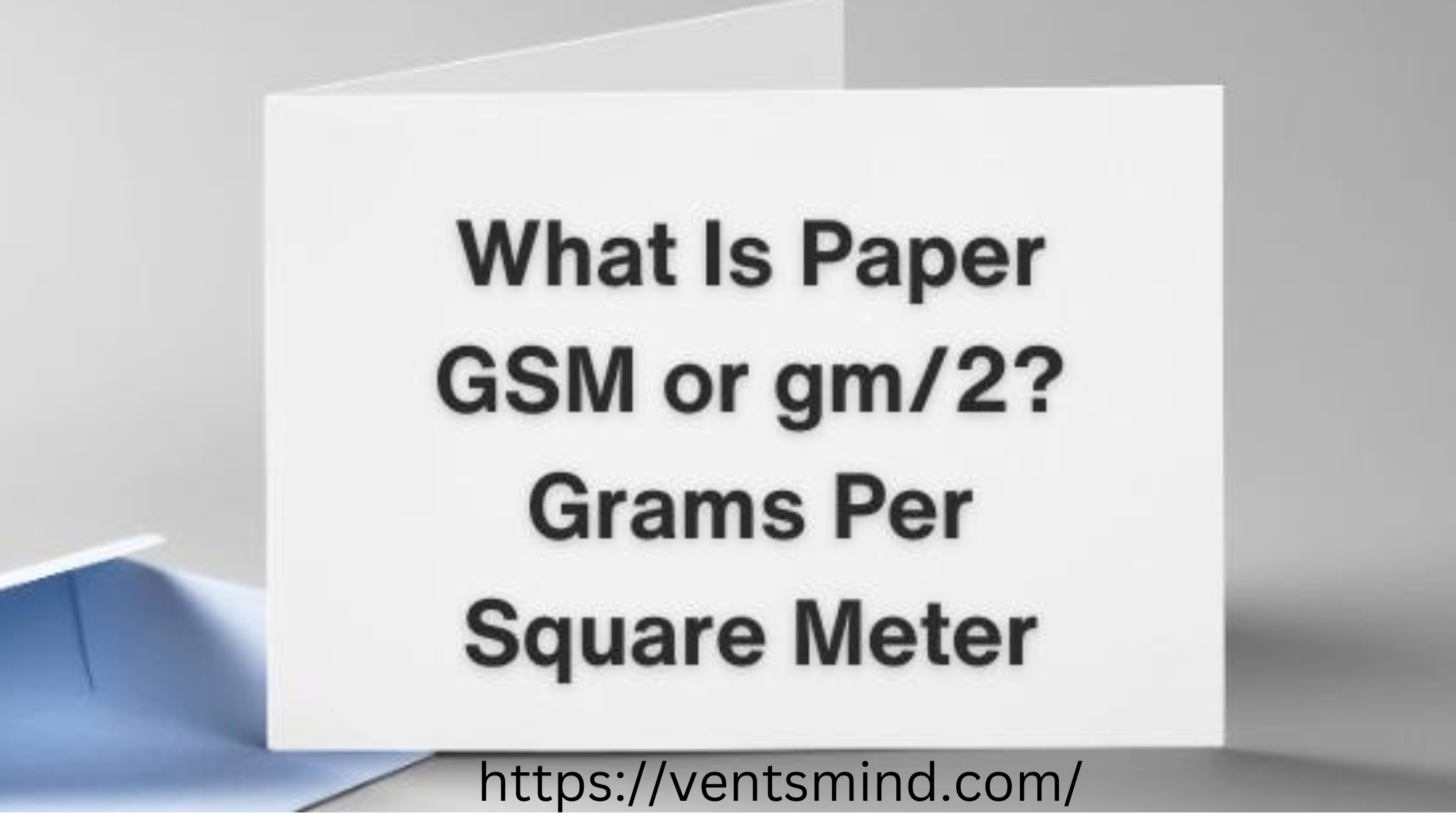
Grams per Square Meter (GSM): Understanding Its best 2024 Importance Across Various
Grams per square meter (GSM) is a term commonly used to describe the density or weight of materials, particularly in textiles, paper, and other sheet products. While it might seem like a technical term reserved for specific industries, GSM plays a crucial role in determining the quality, durability, and application of a variety of materials we encounter in everyday life.
In this article, we will delve into the concept of grams per square meter, its significance, and how it applies to different sectors such as textiles, paper, packaging, and beyond. By understanding GSM, businesses and consumers can make informed decisions about the products they choose, ensuring they align with desired levels of quality, durability, and comfort.
What is grams per square meter?
GSM stands forgrams per square meter, a unit of measurement used to express the weight of a fabric or paper per square meter of its area. The measurement tells you how many grams one square meter of the material weighs, thus providing insight into its density and thickness.
- For textiles, GSM is a measure of fabric weight and often used to describe the quality of fabrics like cotton, polyester, and blends.
- For paper, GSM indicates the thickness and durability of a sheet, influencing its use in different applications such as books, packaging, and art.
- For packaging materials, it helps manufacturers and businesses determine the durability, strength, and functionality of materials like cardboard and plastic films.
grams per square meter plays a vital role across various sectors, helping manufacturers and consumers alike gauge the suitability of products for specific applications. Understanding GSM can be instrumental when comparing products that might seem similar but differ significantly in quality or performance due to their material weight.
grams per square meter in the Textile Industry
In the textile industry, grams per square meter is one of the most critical measures of fabric weight and quality. The weight of a fabric determines its thickness, durability, and feel, which are all crucial for its end use. For example, T-shirts, towels, bedsheets, and even high-performance outdoor gear are often described by their GSM to give consumers an idea of how heavy or light, and how thick or thin, the fabric is.
1. Lightweight Fabrics (GSM below 150)
Lightweight fabrics, such as chiffon, voile, or thin cotton, often have a GSM below 150. These fabrics are typically airy, soft, and suited for warm climates or fashion that requires flowing, delicate materials. Lightweight fabrics are used in products like summer shirts, dresses, and scarves.
- Advantages: Comfortable in hot weather, soft texture, breathable.
- Disadvantages: Less durable, prone to wear and tear, may be see-through.
2. Medium-weight Fabrics (150-300 GSM)
Medium-weight fabrics include materials like denim, jersey, and medium-weight cotton. With a GSM ranging between 150 to 300, these fabrics are sturdy yet still flexible enough for a range of applications, including casual clothing, bed linens, and upholstery.
- Advantages: Balanced durability and comfort, suitable for year-round use, good for layering.
- Disadvantages: Slightly heavier, can feel bulky in warmer weather.
3. Heavyweight Fabrics (300+ GSM)
Heavyweight fabrics, such as canvas, wool, and heavy cotton, typically have a GSM of over 300. These are used in products that require significant durability and insulation, such as outerwear, heavy-duty upholstery, and industrial textiles.
- Advantages: High durability, ideal for cold climates, strong resistance to wear.
- Disadvantages: Heavy and less breathable, not suitable for hot climates, more expensive.
The GSM of a textile not only affects the product’s weight but also its softness, drape, and strength. Consumers can use GSM as a guide to finding the right fabric for their needs, whether it be for something as simple as choosing a T-shirt or as complex as selecting fabric for industrial use.
GSM in the Paper Industry
In the paper industry, grams per square meteris an equally important metric. It refers to the weight of paper per square meter and is a direct indication of its thickness, durability, and application. Paper GSM ranges from as low as 40 GSM (for delicate tissue paper) to over 300 GSM (for heavy cardboard).
1. Low GSM Paper (40-120 GSM)
Low GSM paper is generally lightweight, thin, and used in everyday applications like printing paper, letterheads, and notepads. It is easy to fold and handle but may lack durability and strength.
- Advantages: Affordable, widely available, ideal for large volumes of printing or writing.
- Disadvantages: Thin and prone to tearing, not suitable for high-quality printing or long-term use.
2. Medium GSM Paper (120-200 GSM)
This category includes papers used in products like brochures, flyers, posters, and booklets. These papers have a decent thickness, offering a more premium feel and better durability compared to low GSM papers.
- Advantages: Thicker and more durable, suitable for marketing materials and higher-end printing.
- Disadvantages: Slightly more expensive, heavier to transport.
3. High GSM Paper (200+ GSM)
High GSM paper is thick, sturdy, and often used for packaging, greeting cards, and business cards. It gives a high-quality, professional feel and is excellent for projects that require strength and longevity.
- Advantages: Extremely durable, conveys a sense of quality, ideal for packaging.
- Disadvantages: More expensive, bulkier, may require special equipment for printing or cutting.
When choosing paper, GSM can guide you toward selecting the right paper for your project. Lower GSM papers are great for everyday printing, while higher GSM papers are ideal for projects that require durability and a premium feel.
GSM in Packaging Materials
In packaging, GSM is crucial for ensuring that the material used is strong enough to protect its contents but also cost-effective and practical. Whether it’s cardboard boxes, plastic packaging films, or paper bags, GSM plays a role in determining the product’s strength, durability, and weight-bearing capacity.
1. Plastic Films
Plastic films, often used for packaging in industries like food and pharmaceuticals, are measured in GSM to ensure they have the right thickness to protect products from external factors like moisture, light, and air. A higher GSM indicates a thicker and more robust film, which can offer better protection and durability.
2. Paper Packaging
For paper-based packaging, GSM helps determine whether a material is suitable for use in items like paper bags, cartons, or protective wrapping. For example, a paper bag with a high GSM will be sturdy enough to hold heavy groceries, while a lower GSM bag might only be suitable for lighter items.
3. Cardboard
Cardboard used in packaging is typically rated based on its GSM, which directly correlates with its durability and strength. A high GSM cardboard box can withstand heavier loads and provide better protection during shipping and handling.
How to Measure GSM
GSM is measured by weighing a sample of material and calculating its weight per square meter. The process varies slightly depending on the material in question, but the principle remains the same. Here’s a general outline:
- Cut a sample of the material to a specific size (often 10 cm x 10 cm).
- Weigh the sample on a precise scale.
- Multiply the weight by the necessary factor to convert it to grams per square meter.
For example, if the weight of a 10 cm x 10 cm sample is 5 grams, the GSM would be calculated as:GSM=5 grams(0.1×0.1) m2=500 GSM\text{GSM} = \frac{5 \, \text{grams}}{(0.1 \times 0.1) \, \text{m}^2} = 500 \, \text{GSM}GSM=(0.1×0.1)m25grams=500GSM
This calculation gives you the grams per square meter of the material, which can then be used to compare it to other materials of similar dimensions or properties.
Why GSM Matters
GSM is more than just a technical specification; it impacts product performance, durability, and cost. A higher GSM often signifies better quality, though it also means a heavier product, which can affect transportation and handling. On the other hand, a lower GSM might offer cost savings but could compromise the product’s durability or suitability for certain uses.
For businesses, choosing the right grams per square meter can influence everything from material costs to customer satisfaction. In industries like fashion, publishing, and packaging, GSM helps manufacturers strike the right balance between product quality and cost-effectiveness.
For consumers, understanding grams per square meter can lead to better purchasing decisions. Whether you’re buying clothing, paper, or packaging, GSM can offer a clear indication of what to expect in terms of durability, feel, and performance.
Conclusion
Grams per square meter (GSM) is a vital measure across a range of industries, from textiles to paper and packaging. It gives insight into the weight, thickness, and durability of materials, allowing businesses and consumers alike to make informed decisions. Whether you’re selecting a fabric for a new garment, choosing the right paper for printing, or determining the appropriate packaging for your products, understanding GSM can help you find the perfect balance of quality, performance, and cost.


